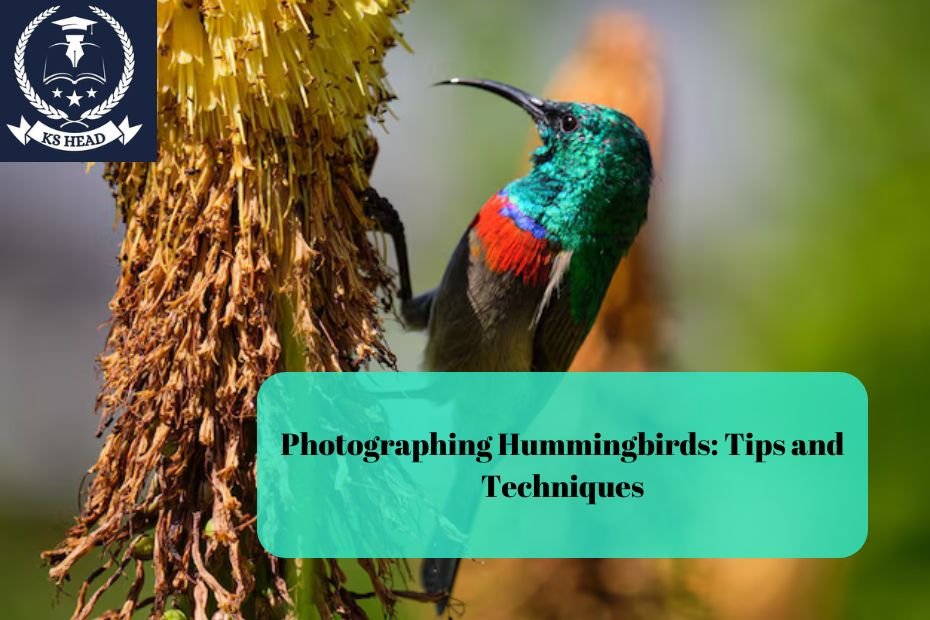Hummingbirds are among the most fascinating birds to photograph, with their vibrant colors, incredible agility, and unique hovering abilities. Capturing their beauty can be a rewarding experience, but it also presents several challenges. This guide will provide you with tips and techniques for photographing hummingbirds effectively, ensuring you come away with stunning images.
Understanding Hummingbirds
Before diving into photography techniques, it’s essential to understand hummingbirds and their behavior. There are over 300 species of hummingbirds, with each exhibiting unique characteristics. They are known for their rapid wing beats, allowing them to hover in place, fly backward, and even perform acrobatic maneuvers. Their iridescent feathers can change color based on the angle of light, adding an extra layer of challenge and beauty to your photographs.
Choosing the Right Equipment
Selecting the appropriate equipment is crucial for capturing high-quality hummingbird images. Here’s what you need:
1. Camera
A DSLR or mirrorless camera with a fast shutter speed is ideal for photographing hummingbirds. These cameras allow for greater control over settings and often perform better in low light. Look for models that offer high frame rates for capturing quick movements.
2. Lens
A telephoto lens (200mm or longer) is recommended for photographing hummingbirds. This allows you to maintain a distance while still filling the frame with the bird. Macro lenses can also be useful if you want to capture close-up details of their feathers and features.
3. Tripod or Monopod
A sturdy tripod or monopod can help stabilize your camera, particularly when using a long lens. This stability is crucial for achieving sharp images, especially in low light conditions.
4. Flash
Using a flash can help illuminate hummingbirds in shady areas or during early morning or late afternoon when light is low. Consider a speedlight or an external flash that can be adjusted for intensity.
Setting Up Your Shot
1. Location
Choosing the right location is key to successful hummingbird photography. Look for areas with abundant flowers that attract these birds. Native plants with tubular flowers are particularly effective. Research local parks, botanical gardens, or your own backyard for suitable spots.
2. Feeding Stations
Creating a feeding station can be an excellent way to attract hummingbirds. Use a hummingbird feeder filled with sugar water (1 part sugar to 4 parts water) and hang it where you can easily photograph the birds. Consider placing the feeder near natural cover, like shrubs or trees, to provide perches for the birds.
3. Background
A clean background is essential for making hummingbirds stand out in your photographs. Look for areas where you can minimize distractions in the background, such as green foliage or a blurred natural environment. You can also use a wide aperture (small f-number) to create a shallow depth of field, which will blur the background.
Camera Settings for Hummingbird Photography
To capture sharp, vibrant images of hummingbirds, you need to understand and adjust your camera settings accordingly.
1. Shutter Speed
Hummingbirds beat their wings rapidly—up to 80 times per second—so a fast shutter speed is essential. Aim for a shutter speed of at least 1/1000s to freeze their motion. If the lighting conditions allow, you may even want to use faster speeds like 1/2000s or 1/4000s.
2. Aperture
Using a wide aperture (f/2.8 to f/5.6) can help you achieve a blurred background while letting in more light. This helps isolate the hummingbird, making it the focal point of your photograph.
3. ISO
Set your ISO according to the lighting conditions. In bright sunlight, you can use a lower ISO (100-400) for better image quality. However, in lower light conditions, you may need to increase the ISO (800 or higher) to achieve the necessary shutter speed.
4. Continuous Shooting Mode
Using continuous shooting mode (burst mode) allows you to capture multiple frames per second, increasing your chances of getting that perfect shot when the bird is in a striking pose.
Composition Techniques
Composition plays a significant role in creating compelling images of hummingbirds. Here are some techniques to consider:
1. Rule of Thirds
Using the rule of thirds can help create a balanced composition. Imagine your frame is divided into nine equal parts by two horizontal and two vertical lines. Position the hummingbird along one of these lines or at the intersection points for a more engaging image.
2. Capture the Action
Hummingbirds are incredibly dynamic. Try to capture them in action—hovering, feeding, or interacting with their environment. Anticipating their movements will help you get the most exciting shots.
3. Eye Level
Photographing hummingbirds at eye level can create a more intimate and engaging perspective. Kneel or crouch to get down to their level, making your photos feel more personal.
Patience and Timing
Photographing hummingbirds requires a great deal of patience. They can be unpredictable, often flitting from flower to flower. Here are some tips to improve your chances of capturing great shots:
- Be Still: Remaining still and quiet will help you avoid scaring them away. Use camouflage clothing if possible to blend into the environment.
- Observe Patterns: Take time to observe their feeding patterns. Hummingbirds often return to the same flowers or feeders repeatedly, allowing you to anticipate their movements.
- Be Prepared: Keep your camera ready to shoot at all times. Set your camera to the right settings before the hummingbirds arrive, so you don’t miss any action.
Post-Processing Techniques
After capturing your images, some post-processing can enhance your photos further.
- Crop and Align: Cropping can help remove distracting elements from the background and focus on the hummingbird. Ensure the bird is well-positioned within the frame.
- Adjust Exposure: Use software to adjust the exposure and contrast, making colors more vibrant and details more pronounced.
- Sharpening: Apply sharpening carefully to enhance the details of the feathers and the bird’s features without introducing noise.
Common Mistakes to Avoid
- Not Using Fast Enough Shutter Speed: A common error is using a slow shutter speed, which can result in blurry images. Always ensure your shutter speed is fast enough to freeze motion.
- Ignoring Lighting Conditions: Be aware of how lighting affects your shots. Avoid harsh midday sun, which can create shadows, and aim for early morning or late afternoon light for softer, more flattering conditions.
- Getting Too Close: While it’s tempting to get close for detail shots, getting too close can scare the birds away. Use a longer lens to maintain a comfortable distance.
Conclusion
Photographing hummingbirds is a rewarding endeavor that requires patience, the right equipment, and a solid understanding of their behavior. By setting up effective feeding stations, choosing the right camera settings, and practicing good composition techniques, you can capture stunning images of these remarkable birds. Whether you are a seasoned photographer or a beginner, these tips and techniques will help you improve your hummingbird photography skills.
FAQs
1. What is the best time of day to photograph hummingbirds?
The best times are early morning or late afternoon when the light is soft, and the birds are most active.
2. How can I attract hummingbirds to my yard?
Use hummingbird feeders filled with a sugar-water solution (1 part sugar to 4 parts water) and plant native flowers that attract them.
3. What lens is best for photographing hummingbirds?
A telephoto lens (200mm or longer) is recommended for capturing detailed shots without getting too close to the birds.
4. Should I use a flash when photographing hummingbirds?
Using a flash can help illuminate the birds in low-light situations, but be cautious of startling them. An external flash with adjustable intensity is often the best choice.
5. How do I avoid blurry images when photographing hummingbirds?
Ensure you use a fast shutter speed (at least 1/1000s) and stabilize your camera with a tripod or monopod to reduce motion blur.

